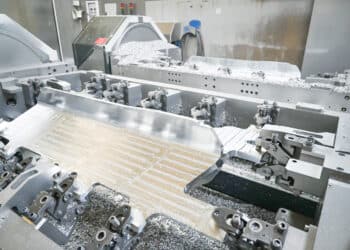Happy 10th birthday 747-8F

Ten years ago, in November 2005, Cargolux and Nippon Cargo Airlines (NCA) placed launch orders for ten and eight 747-8Fs, respectively.
They were both well-established all-cargo carriers with significant 747-400F fleets, and both had been operators of the 747-200F. So it was not surprising that they would be first in line for the next generation of the 747 freighter. What was surprising was that, in a departure from the normal evolution of major aircraft programs, Boeing launched the freighter variant, the 747-8F, before the passenger variant. Cargolux and NCA were, therefore, the launch customers for the type, not just the freighter. (It wasn’t until a year later that the passenger variant, the 747-8 Intercontinental, was launched with a nineteen-unit order from Lufthansa.)
Ten years after those first orders seems like a good moment to look at the state of the 747-8F program.
There has been more than a little pessimism about the 747-8 in the media, and Boeing’s decision in early 2013 to reduce the production rate from the original two-per month to 1.75 did nothing to reassure. This was followed by a reduction to 1.5, then 1.3, and finally, in late June of this year, by the announcement of a cut to just one 747-8 per month, effective March 2016. News in September that launch customer NCA had cancelled four of its outstanding orders was all the proof needed for headlines like this to proliferate: “Boeing Left With No Net Jumbo Jet Orders On Nippon Cargo Cutback.”
To be accurate, that headline, from a Bloomberg report, should have read: “Boeing Left With No Net Jumbo Jet Orders In 2015.” And even if the qualifying “in 2015” had been included, it would still have been misleading. True, NCA’s four cancellations did match the four orders Boeing had booked to that point in 2015 (three from Silk Way, one from Atlas), but the headline completely overlooked the fact that in March of 2015 Cargolux CEO Dirk Reich said, “We already talked today [to Boeing] about the next order of potentially five aircraft,” and also that in June Boeing had signed a Memorandum of Understanding with the Volga-Dnepr Group for up to twenty 747-8Fs to be taken over the next seven years.
And now, with Volga-Dnepr about to take delivery of the first two of the up to twenty it signed the MoU for, and Cargolux moving its need for more freighters to the front burner (see our Cargolux report here), perhaps the 747-8F has a brighter future than reports in September indicated.

We say “best guess” because, as with most commercial aircraft programs, there are uncertainties involved. For example, Boeing shows two freighters ordered by, and delivered to, an unidentified customer. These two were originally built for Atlas Air Worldwide Holdings, which exercised its contractual right not to take delivery, and are now flying in Saudia Cargo livery. We choose to show Saudia as the customer, but it may well be that the true customer is another entity and Saudia is only the end user. Likewise, there is the question of what “up to twenty” really means. AirBridgeCargo, Volga-Dnepr’s scheduled-service subsidiary, already operated six 747-8Fs when Volga-Dnepr signed the MoU at the Paris Air Show. We show Volga-Dnepr’s order total as twenty-six, but it may turn out to be less.
And then there are the four “mystery freighters.” These are units 60117, 60118, 60119, and 60120, which were built, but for which Boeing showed no customer. Cargo Facts believes they were built in anticipation of a firm order, which did not materialize, from Asiana Airlines, either directly or through lessor ICBC Financial Leasing Co. But whoever the status of the original order, the freighters are real enough. One (60120) has now been delivered to Silk Way, two (60117 and 60118) are now at Boeing’s Everett facility in AirBridgeCargo livery, while the fourth (60119), currently wearing the livery of the Seattle Seahawks football team, is also reported to be destined for AirBridge.
But even though all three will be delivered to AirBridge, Boeing’s customer appears to be US-based investment company Four Six Four Aircraft, which will lease the freighters to the Russian carrier. However, until there is a formal announcement of the actual customer, we will show them as part of Volga-Dnepr’s twenty-unit MoU.
As of today, Boeing’s website shows that the manufacturer has delivered sixty 747-8Fs and has taken orders for sixty-eight (following the recent cancellation of the four orders by NCA), leaving a backlog of eight. However, in addition to the sixty-eight, there is one unit ordered by, and built for, Atlas Air Worldwide, but not accepted by Atlas. We show that freighter as belonging to Boeing. As mentioned above, there are also twenty units in the MoU from Volga-Dnepr. This raises the orders total to eighty-nine.
On the other side of the equation, in addition to the sixty so far delivered, Boeing has completed production of five more: the three originally built for Asiana but now destined for AirBridge, one awaiting delivery to Atlas, plus the above-mentioned unit Atlas chose not to accept (in storage at Marana since November 2014). Two more are currently in production (one each for Silk Way and Korean Air), and five are in the pre-production stage (one each for Cargolux, Cathay Pacific, and Silk Way, plus two for which the customer is not yet known but which we show as being destined for Volga-Dnepr).
Counting the units currently in pre-production, Boeing’s 747-8F backlog now stands at twenty-two.
This is a considerable improvement over the situation a year ago, when Boeing’s 747-8F backlog had shrunk to just eight units. On top of which, the manufacturer then had three freighters built but for which customers had deferred delivery, and three built for which there were no customers at all. And if that wasn’t enough, the only two in production also had no customer. Contrast this to the present, and things look much brighter. The whitetail problem has been resolved, no deliveries are in the limbo of deferral, and the backlog has almost tripled.
True, a backlog of twenty-two 747-8F orders is not anything like the fifty-four 777Fs and eighty-two 767-300Fs in Boeing’s backlog, but the freighter side of the 747-8 program is much healthier than it was. Also worth noting is that of the eight airlines that have ordered 747-8Fs, all but one (Saudia) have increased their original orders. Even NCA’s cancellation of four orders leaves it with ten – two more than its original eight.
However, in addition to the 747-8F, Boeing also offers the 747-8I, or Intercontinental, in passenger and VIP configuration, and on this side of the program, things are less rosy. The manufacturer has booked firm orders for forty-three 747-8s in passenger configuration and nine in Business Jet/VIP configuration. Of these, thirty-eight have been delivered, including twenty-eight in pax configuration (nineteen to Lufthansa, seven to Air China and two to Korean Airlines) and eight in VIP configuration. This leaves an official backlog of fourteen pax-configured aircraft, but in reality, the backlog is much smaller.
Of the fourteen, four have been built but not delivered (two for Korean, two for Transaero), two are in final assembly (both for Korean), and 4 are in pre-production (all for Korean). This leaves four in the backlog but not yet in production or pre-production – two for Transaero and two for Arik Air. But Transaero is bankrupt, and Arik has indicated it might swap its 747-8I orders for 777s. So, beyond the six already in production or pre-production, the 747-8I backlog is effectively zero, and Boeing hasn’t booked a new order since 2013. Not a healthy situation.
Which brings us back to the question of the program’s future. The freighter variant, while hardly the best-selling freighter in Boeing’s history, has done, and continues to do, reasonably well. However, at an average of less than ten orders per year, the freighter variant cannot, by itself, sustain the 747-8 program. In our view, therefore, the future of the 747-8 program as a whole is dependent on a resurgence of interest in the 747-8I. But where will the pax orders come from?
Cargo Facts believes that among the 300 Chinese orders and commitments announced, but not detailed, during President Xi Jinping’s visit to the Boeing facilities in the Seattle region, there will be some for the -8I. These, along with the current backlogs for the freighter and passenger variants will be enough to keep the line running for a few more years, so, scary headlines aside, there is no immediate danger that Boeing will run out of 747-8s to build. But if the program is to endure, more orders for the passenger variant are needed.




